Mark Messersmith’s large sculptural canvas artworks depict stories both real and imagined, where flora and fauna are in a state of struggle and turmoil. Their struggles are in many ways natural, as it is the life cycle and food chain nature has dictated. However, what Messersmith illustrates is how nature also struggles against unnatural influences—environmental crisis and issues caused by humans. Messersmith explores how animals and plants survive the effects of human actions that often result in migration, dislocation, isolation and even extinction and extermination. Messersmith hopes that through his paintings he can encourage humans to rethink the way they act as stewards of their environment, as he believes we are midway between hope and despair. Messersmith’s works explore these issues from Florida, where he is based.
LSU MOA recently acquired a work by Messersmith entitled Summer 2010 (pictured above). The sculptural painting is based on the story of the Deepwater Horizon oil spill that began in April 2010 and lasted until September of that same year. An estimated 210 million gallons of oil were spilled into the Gulf of Mexico during this time. This spill is regarded as the largest oil spill in the petroleum field’s history, killing 11 people, exposing thousands of protected species of animals to oil, and altering the sensitive ecosystem of the Gulf. It is estimated that it will take the Gulf until at least 2079 to recover from this disaster.
The inspiration for this work was the fact that despite the horrors of the spill, the overall response was one of apathy. Yet, the animals, their ecosystem and environment, and even their food chain was and is still being altered by this spill. When you look at this painting, it does not seem as if it is a commentary on something so apocalyptic and catastrophic. Typical of Messersmith’s work, it is warm, sunny, and vibrant. It is idealistic. Near the center sits a telephone pole as an example of how human activity impacts flora and fauna. On the telephone pole sits a pelican and an ivory billed woodpecker pecking away. This woodpecker was officially declared extinct in the US in 2021.
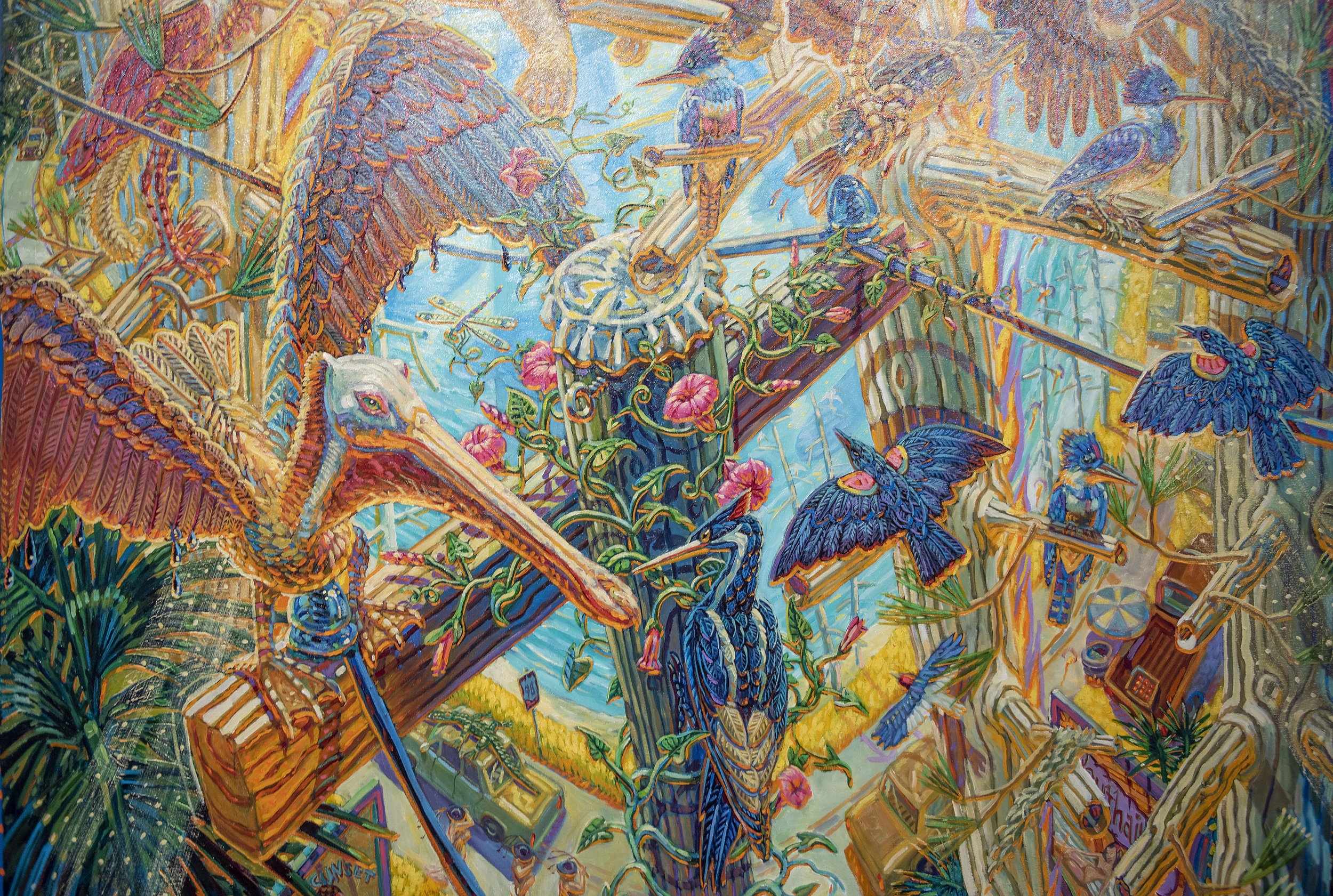
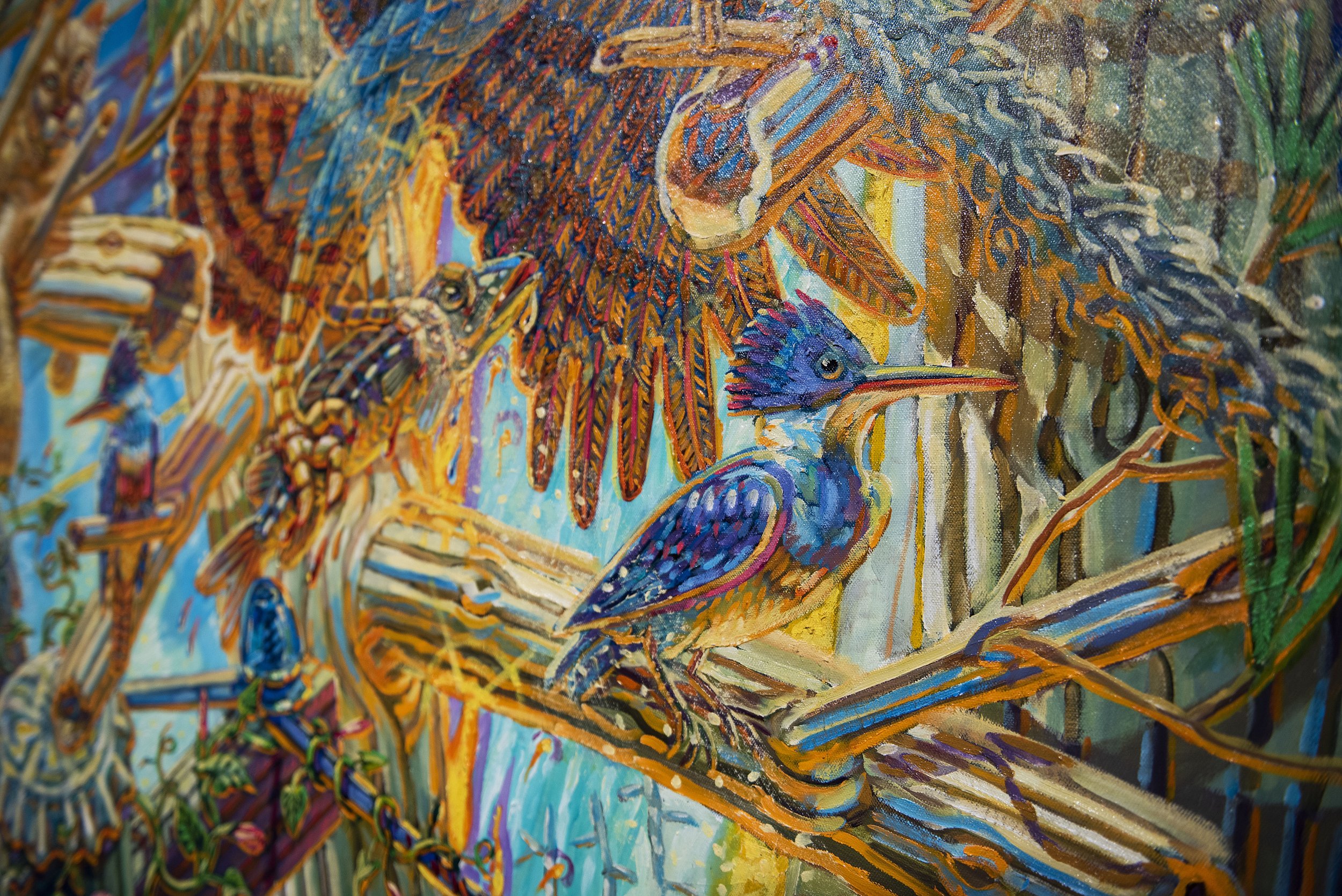
Above the pelican is a spoonbill and panther resting on a tree. A goldfinch—a bird that is thriving because of human activity—sits on foliage that extends from the tree. Just off to the right of the panther, an osprey soars with a fish in its claws. All around there is a variety of lively fauna, including kingfishers and red-winged black birds. Trucks are visible on the street below, one even selling produce and the other with an alligator strapped across the roof. The water in the background is glistening and the sun is shining so brightly that everything appears to glitter and shimmer. This is a signature feature of Messersmith’s works: he actually uses glitter in his paintings, which gives them an iridescent glow.

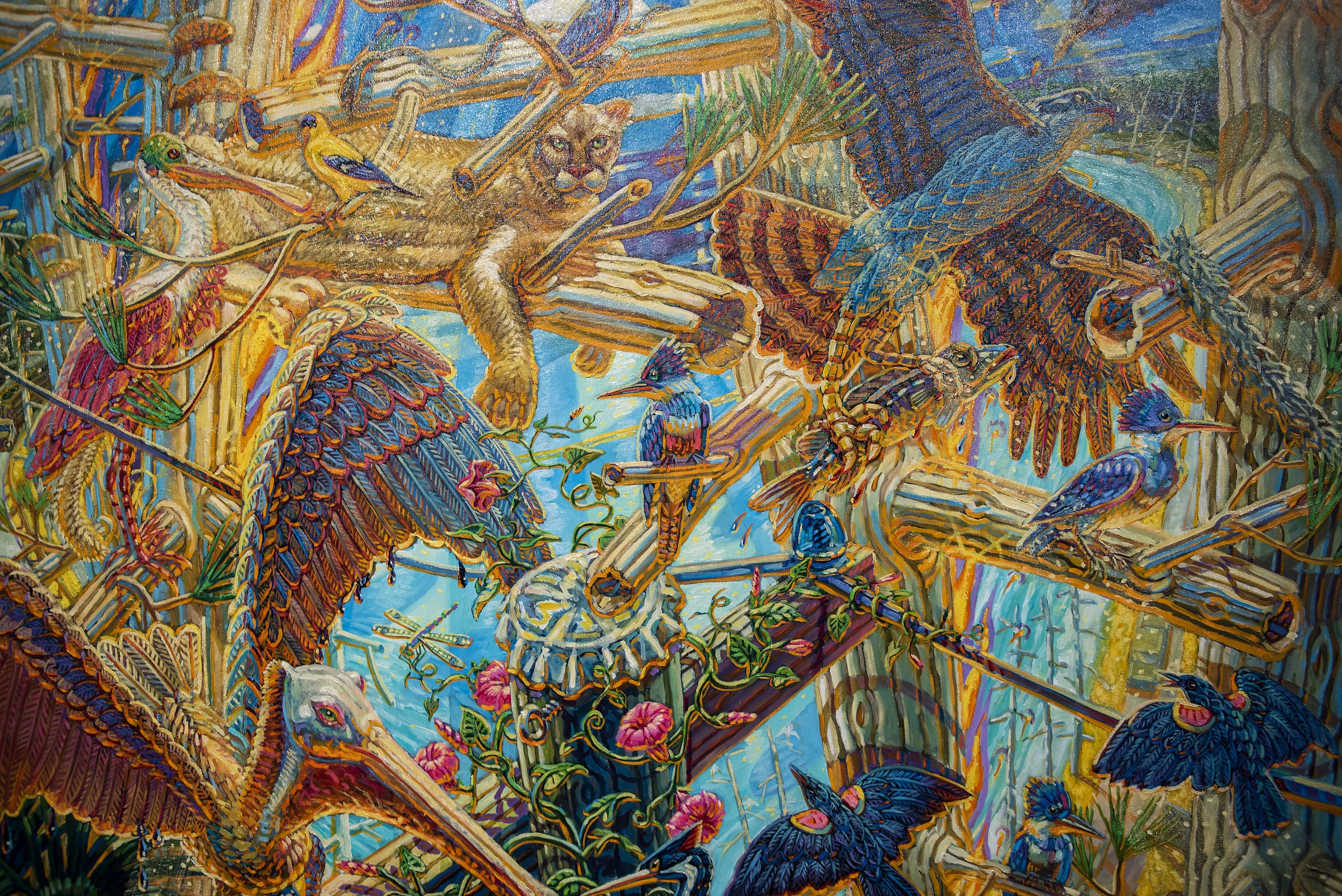
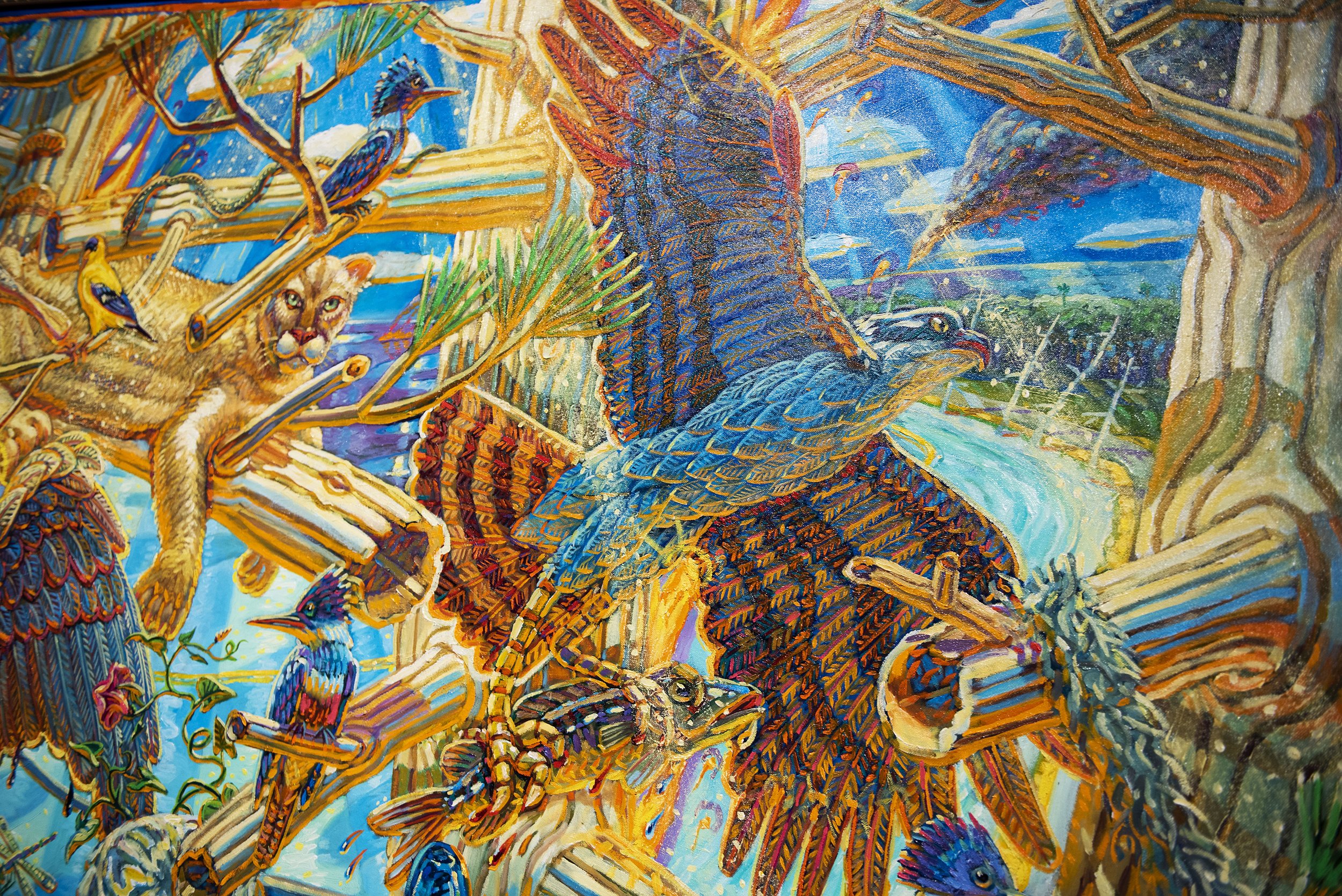
In this moment, it seems as if animals, plants, and humans are peacefully coexisting. However, as we know, the Deepwater Horizon rig has exploded in the distance—the perfect example of the “out of sight, out of mind” mentality that Messersmith explores in his works. Rather than represent a threat directly, Messersmith makes implications and indirect references to the issues his work represents.
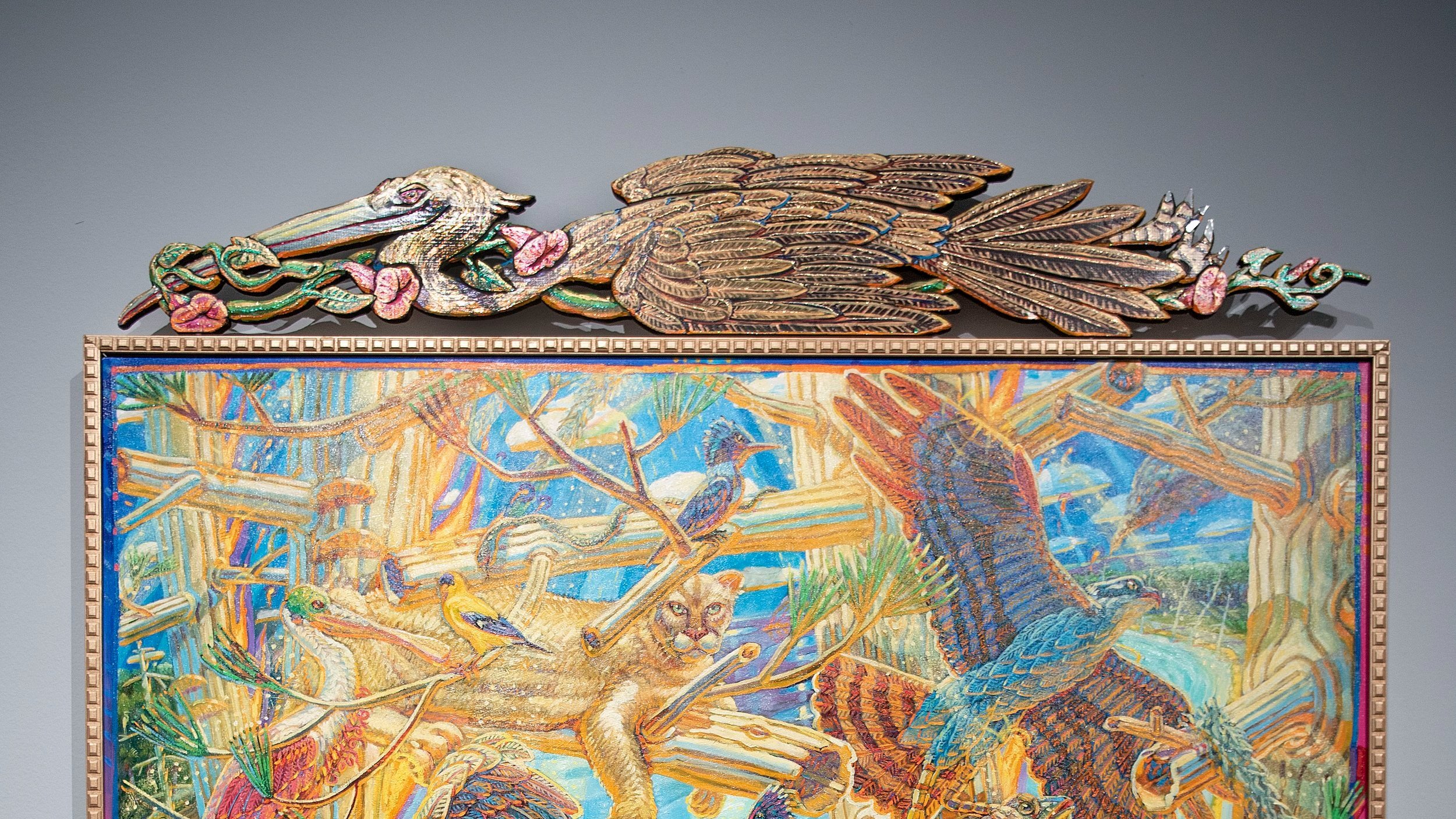
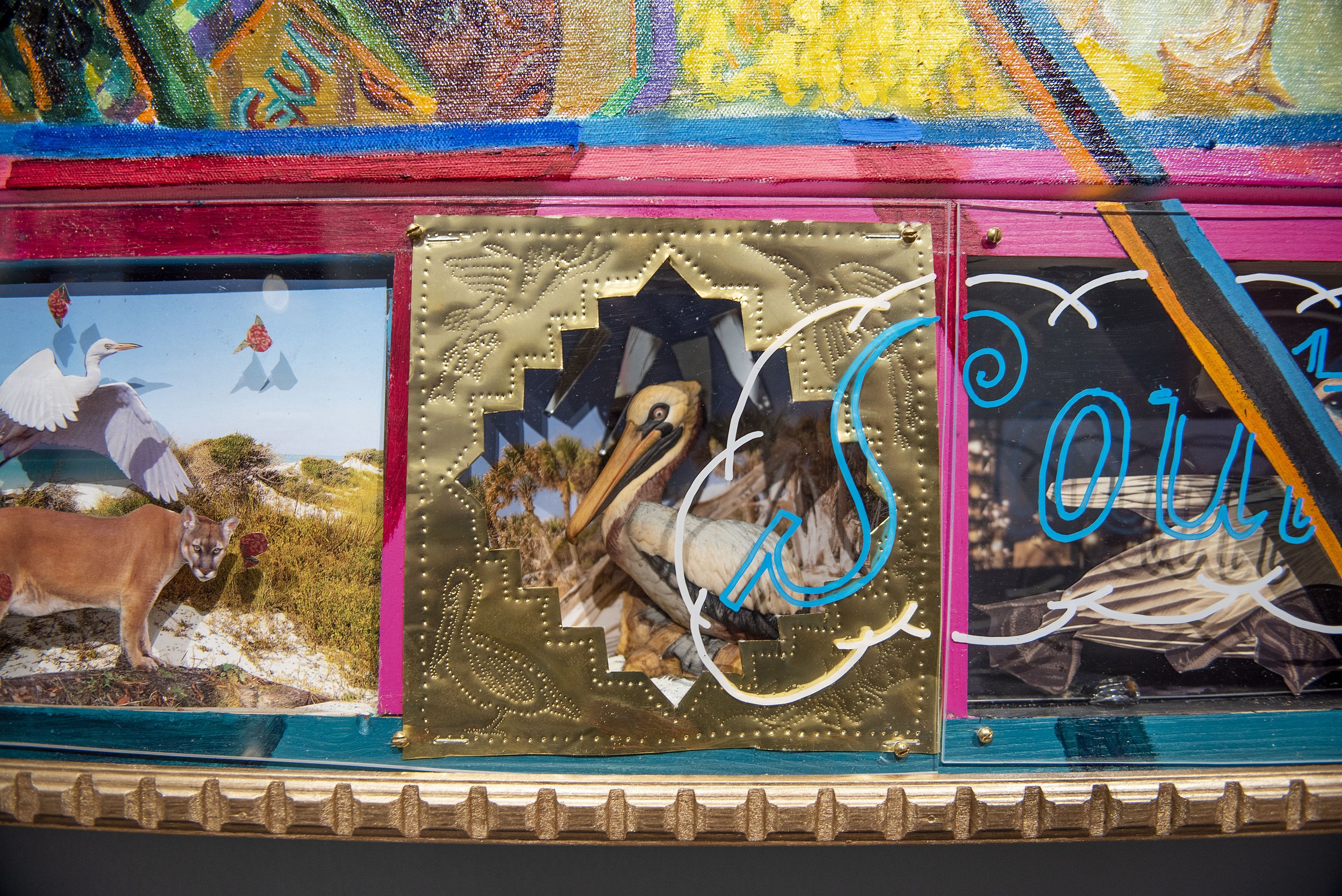
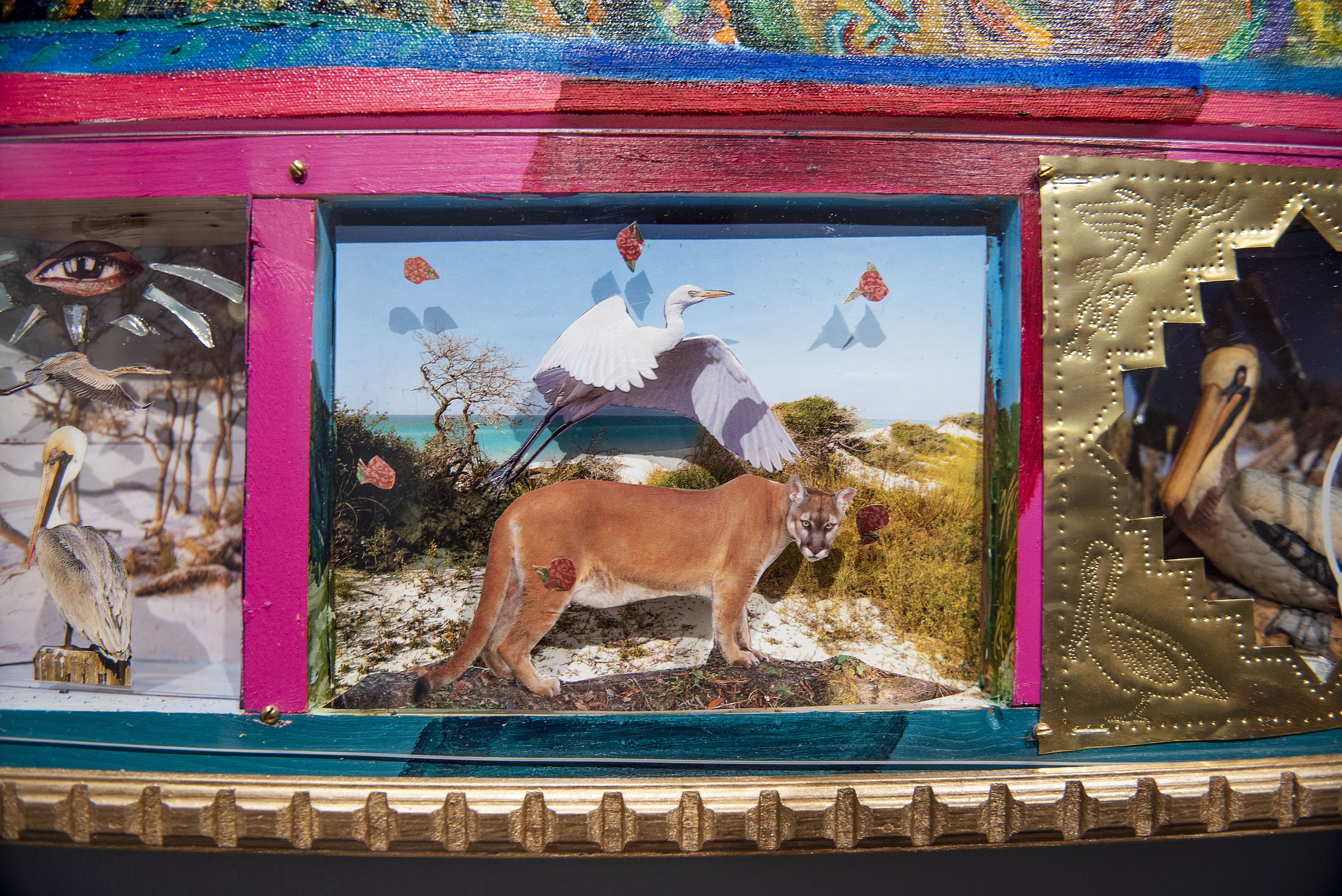
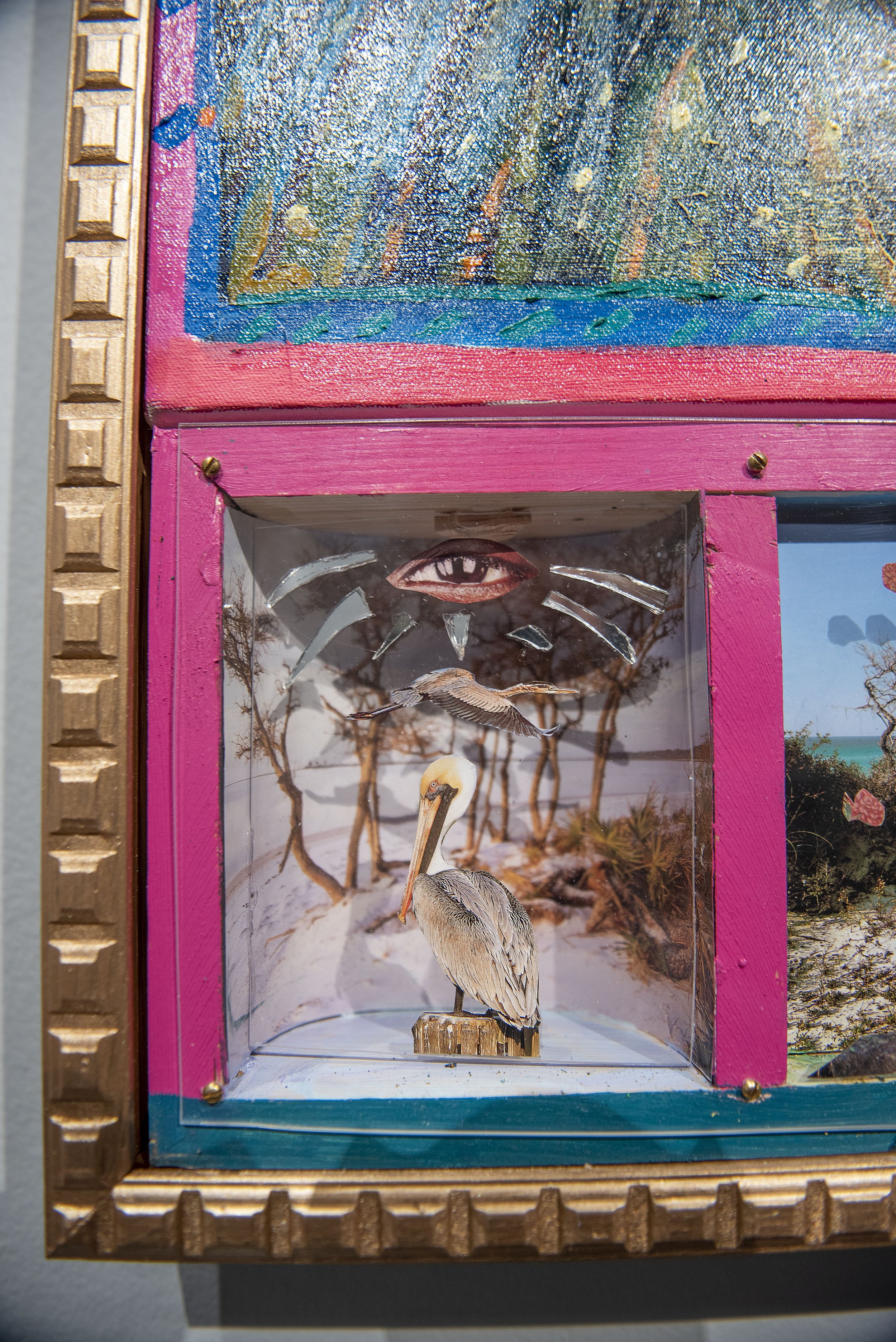
At the top of this work is a carved wooden pelican. The pelican is perhaps a dual reference to Florida, where pelicans exist in abundance, or religion, where Pelicans are often used to symbolize sacrifice, especially the sacrifice of Jesus Christ for man. At the bottom of the work are five scenes that further explore environmental degradation. This strip of scenery is called a predella and, in addition to the other carved wood elements, references religious Renaissance paintings that inspire Messersmith.
The story begins with a pelican resting on a wooden stump. Above the bird is the Eye of Providence, which represents God watching over humanity. In the next scene, there is a panther that stands on a log and stares directly at the viewer while the tropical environment around appears to be deteriorating. Decay increases throughout each image and by the sixth scene, a battle is happening. In the surreal scene, birds are flying and attacking humans, monsters are present, and some of the birds are anthropomorphic, having bird heads with human bodies. Certainly, this is a representation of the circle of life, but it also comments on how the actions of humans affect their surroundings. One of the human figures lays lifeless on a plank while this chaos ensues around him—an ironic example of how animals struggle, survive and perish while humans make choices that destroy their habitat. In the final scene, a pelican stands on a rock with its beak agape as it looks out into a body of water that is consumed by oil, seemingly in a place somewhere between hope and despair. This artwork is especially poignant because of the environmental crises that plague Louisiana and other areas around the world. Summer 2010 is currently on view in LSU MOA’s Art in Louisiana: Views into the Collection Landscape and Environment gallery
Written by Kirsten Campbell, LSU MOA Graduate Assistant
Photography by Charles Champagne
LSU MOA thanks Louisiana CAT for supporting graduate assistantships. Their support allows the museum to provide arts education and career experience to students.

